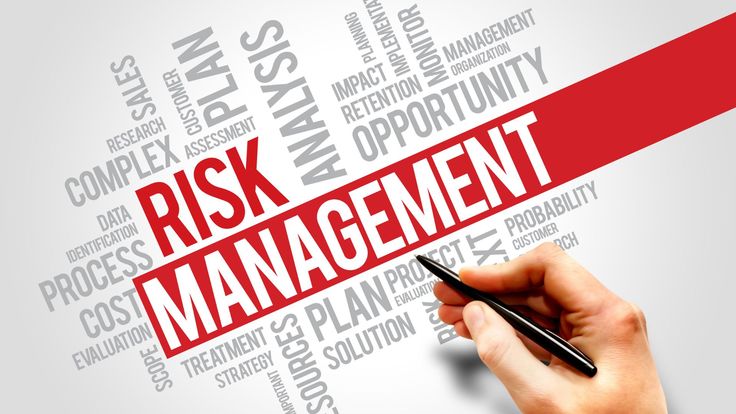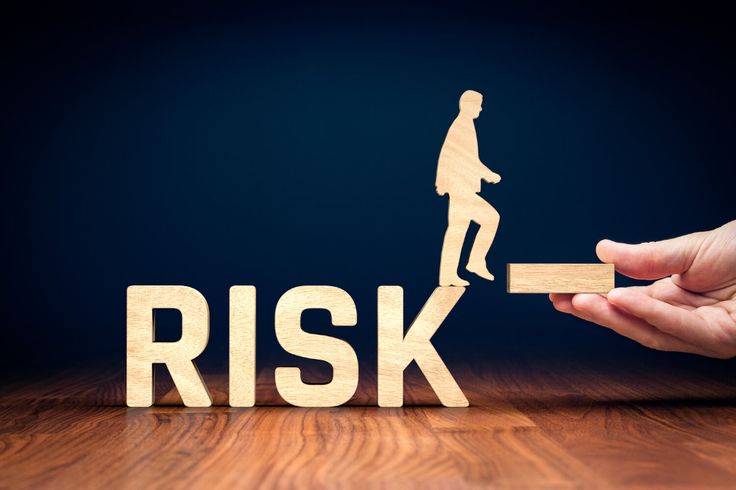
Risk management is an essential element of business operations, regardless of the size of the business or industry. It involves the assessment, identification and mitigation of possible risk factors that may impact the organization’s its financial stability, or even its reputation. In recognizing the importance in risk-management, organizations can take proactive steps to protect themselves from risks and make the most of opportunities.
The most important advantage of risk management lies in its capacity to assist businesses in anticipating and preparing for possible issues. Through the identification and evaluation of risk, businesses can devise strategies to limit the impact of these risks and minimize the risk of losses. This proactive approach allows organizations to better prepare to deal with unexpected events such as natural disasters, economic recessions, or security attacks.
Additionally, risk management aids in better decision-making through the consideration of possible risks and benefits. By analyzing the possible outcomes of different actions organisations can take strategic decisions that match their long-term goals and goals. Risk management plays an important role in establishing the trust of all stakeholders.
Customers, investors, and employees alike want assurance that a company can manage any possible risks. Through demonstrating a commitment to risk management, companies can improve their image as well as their credibility market. This will increase customer trust, confidence in the company, as well as employee satisfaction.
Understanding how important risk management can be is crucial for businesses to shield themselves from threats that could be posed and make educated decisions and establish trust with the stakeholders.
Important Highlights
- The management of risk is essential to the longevity and success of a company.
- Recognizing and assessing risks aids in assessing the potential risks to the company.
- Implementing risk mitigation strategies is crucial to reduce the negative impact of risky situations.
- A risk management plan offers a method of managing risk.
- Monitoring and reviewing the risk management process ensures that the business is well-prepared for any changes to the risks.
Detecting and Assessing Business Environment Risks
Risks to Operations
The most common form of risk that can be found in the business world includes operational risks. This is a term used to describe risks that are associated with internal procedures, systems, and individuals. Examples of operational risk include mistakes by employees, system failures and supply chain disruptions. When identifying and evaluating operational risks, businesses can adopt procedures and controls to reduce their impact and ensure smooth operation.
Financial Risks
Another risk type to be considered is the financial risk. This covers risks pertaining to the financial health of an organization like market volatility, sba loan problems, credit risk as well as liquidity risks. When they understand the financial risks businesses can formulate strategies to mitigate their risk and safeguard their financial stability.
Strategic Risks
In addition, companies must take into consideration strategic risk, which is associated with the organization’s longer-term goals and goals. This can include risks arising from market trends, competition, as well as technological advancements. When assessing and identifying the strategic risks, companies can modify their strategies to make the most of opportunities and remain ahead of the pack. In the end, it is essential to identify and assess risks within the business environment is vital for businesses to devise efficient strategies for managing risk.
Putting Risk Mitigation Strategies into Practice
After risks have been identified and evaluated, companies must develop risk mitigation strategies to reduce the impact of these risks. This includes establishing and implementing procedures and controls to limit the chance and severity of risk. Through applying risk mitigation strategies, companies can safeguard themselves from possible threats and ensure the smooth running of operations.
A common strategy for reducing risk is to set up internal controls. This means setting up procedures and policies to ensure that activities are carried out in a controlled and efficient way. For example, companies could create segregation of functions to stop fraud or create approval procedures to make sure that decisions are made under the proper supervision.
Another method of reducing risk can be to shift risk using contracts or insurance. In transferring the risk to third-party companies can safeguard themselves from financial loss. For instance, companies can purchase insurance policies that protect against liability or property damage claims.
Additionally, businesses can mitigate or avoid risk by diversifying their activities or investing. By spreading their operations across different products or markets, businesses can limit the risk of a specific risk. For instance, companies can expand into new markets or even invest in various classes of assets to spread their risks.
In the end, implementing risk-reduction strategies is crucial for companies to guard themselves from risks and ensure that their operations are safe. Through the development and implementation of control procedures and processes, as well as transferring risk via contracts or insurance, and diversifying their investments or operations businesses can lessen the potential impact of risks.
Creating a Risk Management Plan
The creation of a risk management strategy is a vital element of the process of risk management. It is the process of developing a comprehensive plan to determine the risks, evaluate them, and reduce possible risks that could negatively impact the business’s operations, finances, or reputation. Through the development of an effective risk management strategy that businesses can defend themselves against potential threats and make the most of opportunities.
A key element of a successful risk management program is to set clearly defined objectives and targets. This includes determining the company’s risk tolerance and setting clear goals for the risk management process. With specific goals and objectives, business owners can make sure that their risk management efforts are in line with their overall strategic plan.
Another crucial part of a risk-management plan is to recognize and evaluate potential risks. This is done by conducting an in-depth study of the different types of risks that may affect the business. When they understand the risks and opportunities available, companies can devise strategies to minimize the impact of their actions and maximize opportunities.
Additionally, a risk management plan should outline specific steps and responsibilities for controlling risk. This means delegating roles, responsibilities, and even responsibilitiesfor the implementation of risk mitigation strategies, as well as keeping an eye on the potential risks. By clearly defining the actions and responsibilities, organizations can ensure that risk mitigation strategies are efficiently executed.
In the end, establishing an effective risk management strategy is crucial for companies to protect themselves from possible threats and take advantage of opportunities. By setting specific goals and objectives as well as identifying and assessing possible risks, and setting out specific steps and responsibilities to manage risk, companies can formulate an effective strategy for managing the risk of potential dangers.

Tracking and Evaluating Risk Management Procedures
Reviewing and monitoring the risk management process is an essential element of the process of managing risk. It is about regularly assessing the effectiveness of risk management processes and making changes as required. By checking and evaluating the processes for managing risk, companies can make sure they are effectively addressing potential threats and taking advantage of opportunities.
As they say in the executive coach or training sessions, the important aspect of reviewing and monitoring the risk management process is to identify the key metrics (KPIs) to gauge the efficiency of risk management processes. This means the creation of specific metrics to monitor the results of risk management initiatives, including the number incident incidents, or the severity of possible risks. Through the establishment of KPIs, companies can evaluate how effective their risk-management efforts are and take informed decisions regarding possible adjustments.
Another aspect to monitor and reviewing the risk management process is conducting regular audits and evaluations of risk management processes. This includes assessing the effectiveness of procedures and controls, and also identifying weak points or gaps in the risk management processes. Through periodic audits and assessments companies can pinpoint areas to improve and make the necessary adjustments in their risk-management practices.
In addition, companies must periodically evaluate their risk management strategy to ensure that it stays in line with their overall strategic direction. This means assessing changes to your business’s environment, for example, the introduction of new regulations or market trends and making changes to the risk management plan when required. Through regular review of the risk management plan companies can be sure that they are adequately managing the risk and taking advantage of opportunities.
Monitoring and reviewing the risk management process is vital for businesses to ensure they are proactively addressing the risk of potential threats and taking advantage of opportunities. Through establishing KPIs to gauge the effectiveness of risk management processes by conducting periodic audits and reviews of risk management processes, and regularly reviewing the risk management plan, businesses can be proactive in protecting themselves from threats that could be posed.
Employee Education and Training in Risk Management
Risk Management Education and Training for Employees
One method to educate employees in risk management is to hold sessions or seminars that teach fundamental concepts, such as the different kinds of risk (e.g., operational, financial, and strategic) and understanding how these risks could affect the company’s goals. The sessions also offer concrete examples of ways employees can be involved in managing risks in their day-to-day tasks.
Personalized Instruction for Particular Departments
Alongside workshops and seminars, companies should offer ongoing training via online learning platforms as well as internal sources that address specific aspects of risk management that are relevant to the various departments or roles within the company. For instance, the finance team might require training in strategies for assessing financial risk, while IT departments may need education on best cybersecurity practices.
Fostering a Culture of Open Communication
Additionally, companies must encourage open and honest communication regarding risks through fostering an environment in which employees are comfortable expressing any potential concerns or issues without fear of reprisal. This can be accomplished by having regular meetings with the team where the employees can discuss any concerns or observations regarding the risks they may have identified within their workplaces.
Encouraging Workers to Reduce Risks
Training and educating employees about risk management is essential to creating a culture of responsibility and awareness within an organisation. Through providing extensive education on the most important concepts related to risk management theories and practices via seminars or workshops and continuous training using online learning platforms or internal resources relating to the various departments or roles within the company, companies can help employees recognize risks and take the appropriate measures to minimize the risk.
Adjusting to Changing Business Environment Risk Factors
Being able to adapt to the changing risks in the business context is vital for companies to remain resilient in new threats. The business environment is constantly changing due to technological advances and regulatory changes, as well as economic shifts and global issues like pandemics and geopolitical tensions. In this regard, companies have to constantly assess their vulnerability to risk that is changing or new and adjust their methods of managing risks to meet the changing needs of the market.
One method for organizations to adapt to changes in risk factors is to conduct regular risk assessments, which take into consideration the latest developments in the business context. This could mean reassessing existing risks in light of the latest information or identifying new risks that weren’t previously taken into account. Alongside regular evaluations, organizations must be aware of trends in the industry by participating in organizations or forums that provide insights about emerging risks that could have an impact on their operations.
This approach helps organizations to be aware of potential issues before they turn into serious threats. In addition, businesses are required to be prepared to alter their strategies for reducing risk based on the latest information or changes to the environment of business environment. For instance, when there are modifications to the regulations that affect specific aspects of the operation of the business or if there is a rise in cybersecurity threats resulting from technological advances, businesses are expected to adjust their procedures and controls accordingly.
In the end, adapting to changes in risks and threats in the business world is vital for companies to be resilient to new threats. Through regular risk assessments that take consideration the latest developments in the business landscape being aware of the latest trends in the industry by participating in trade associations or industry forums in which they gain insight into the newest risks that could have an impact on their operations and also being ready to modify their risk mitigation strategies to reflect the latest information or changes in the business climate; businesses can take proactive steps to protect themselves from threats and making the most of opportunities.




